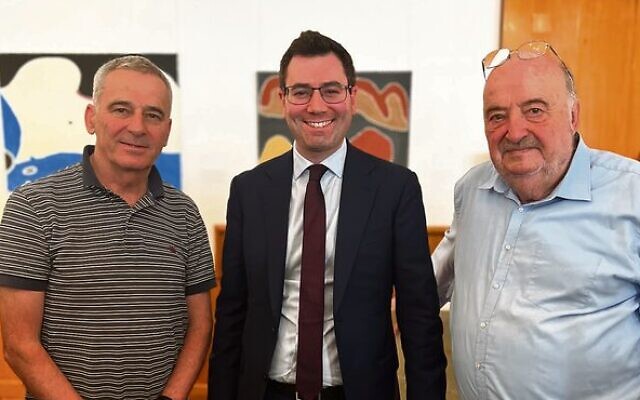Kwiet details Nazi collaborator’s wartime past
Sydney Jewish Museum's resident historian Professor Konrad Kwiet visited the Wollongong Art Gallery to deliver a lecture about Bronius Sredersas to a packed audience.

Sydney Jewish Museum’s resident historian Professor Konrad Kwiet says the art donated to the Wollongong Art Gallery by Nazi collaborator Bronius ‘Bob’ Sredersas should be used to educate the public about the Holocaust.
Kwiet visited the gallery last week to deliver a lecture to a packed audience, where he revealed Lithuanian-born Sredersas is suspected to have been involved in the murder of an escaped Jew in 1943.
The investigation into Sredersas was sparked by former Wollongong councillor Michael Samaras, who noticed that Sredersas’ listed profession was a policeman with the Lithuanian government’s department of security.
Sredersas migrated to Australia in 1950 and went on to amass a huge private art collection, which he then bequeathed to the Wollongong Art Gallery before his death in 1982.
Last year Wollongong Council and the NSW Jewish Board of Deputies engaged with the Sydney Jewish Museum (SJM) and Kwiet, with the Holocaust historian going on to provide a report confirming that Sredersas was a Nazi collaborator.
Now, Kwiet says he suspects Sredersas was the same SS squad leader who led a group of Hitler Youth members into a forest to track down Jewish escapees. During the war Sredersas attained German citizenship and changed his name to Bronislaus Schroeders, which may have appeared in other historical reports as ‘Shroder’.
“This group found a hide-out and they found a Jew who had escaped into the forest; he had escaped the ghetto deportation and was hiding there,” Kwiet said.
“The group under the guidance of SS Sergeant Shroder took him out, and in that stage in late 1943, Jews who escaped deportation and went into the forest could be killed immediately on the spot.
“Sergeant Shroder did not kill the Jew in hiding, he waited until a group of Lithuanian policemen showed up to take him back to a police station where the Jew, with a Jewish star, was interrogated and he was murdered.”
With Sredersas’ past now uncovered, Kwiet says his art collection has obtained a “very important educational function”.
“It could be used to tell the story of immigration or multiculturalism, of the arrival of alleged war criminals, but also of refugees,” he said.
The lecture continued Wollongong Council’s commitment to build knowledge and awareness in the community about the man whose gift of artworks to the city allowed for the establishment of the Wollongong Art Gallery.
“I feel privileged to have the opportunity to hear from Professor Kwiet about his research into Mr Sredersas, and to understand this information within the broader context of World War II,’’ Wollongong City Mayor Gordon Bradbery said.
“Information and stories like this are complex, detailed and nuanced and to have someone like Professor Kwiet in Wollongong to provide his very personal insights into how his research was undertaken and to share his immense knowledge and expertise is a profoundly detailed and nuanced opportunity. I thank him for his time and care in delivering such an engaging, detailed and informative presentation.’’
NSW JBD CEO Darren Bark said, “The Bob Sredersas story is a unique opportunity to inform the Wollongong and border community about the horrors of the Holocaust and where racism, hate speech and discrimination can ultimately lead.
“The NSW JBD, together with the SJM, looks forward to working with Wollongong Council and the Wollongong Art Gallery to ensure the paintings that Mr Sredersas donated are used to educate the community about humanity’s darkest chapter so that it is never repeated.”

comments